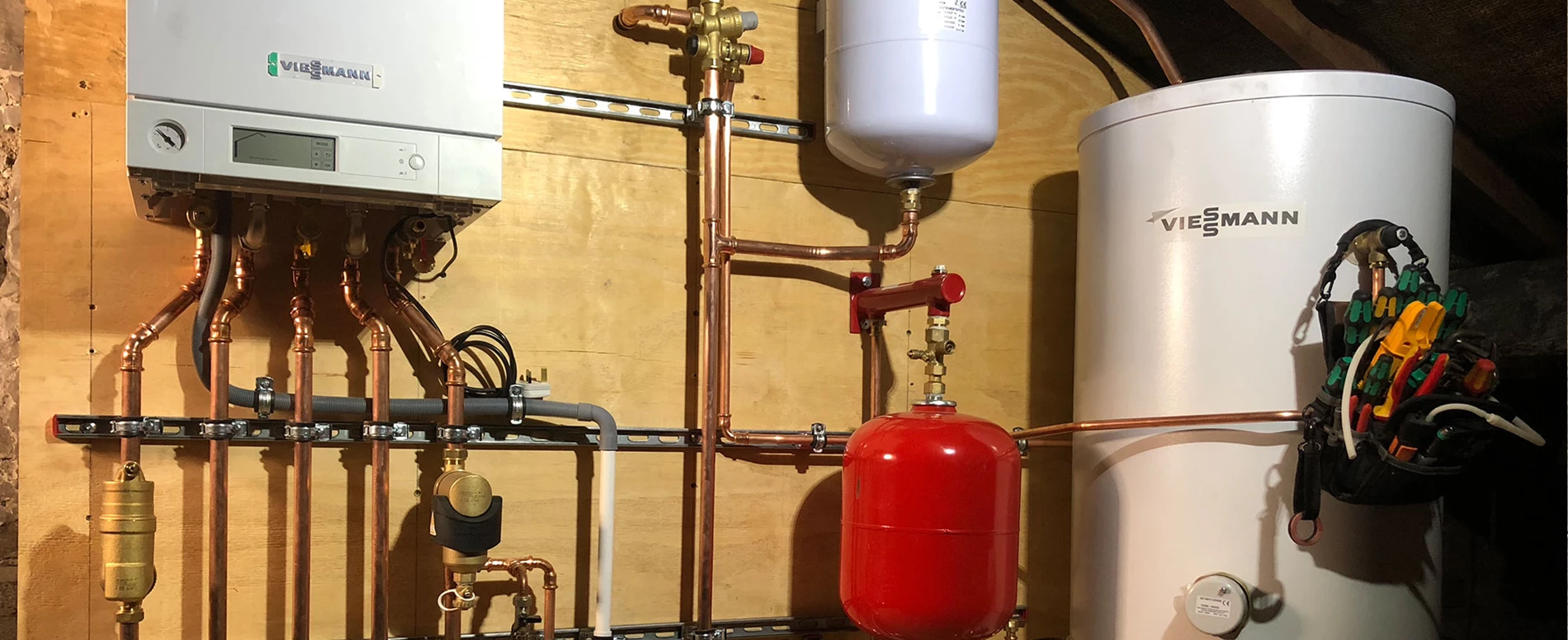
VDI 2035 Water Treatment for Heating Systems
VDI 2035 directive sets out the technical standards that the water in heating systems in Germany need to adhere to. If the heating system is properly filled, no deposits can form and the corrosion is reduced to a minimum. Should damage nevertheless occur, there are various reasons.
The causes of heating damage can be: too much oxygen in the water, sludge has formed, and/or the ph is in the acidic range. To ensure a system is “properly filled”, we follow a six step process:
Step 1: Analyse the water in the system
The guide values for the heating water
VDI 2035 standard are:
• Electric conductivity: <100 µS
• pH-Value: 8,2 – 10 pH (8,2 – 8,5 Aluminium)
• Total hardness: <3°dH
Step 2: Clean the system
Clean the system using chemicals. Note: *Steps one and two are not necessary if the system is filled for the first time.
Step 3: Flush the system
Flush the system to remove any dirt and/or sludge, this can be done in different ways such as a mains water flush or more commonly known a “powerflush” using a high velocity pump.
Step 4: Demineralisation
Flush the system to remove any dirt and/or sludge, this can be done in different ways such as a mains water flush or more commonly known as “powerflush” using a high velocity pump. Heating systems should be replenished to maintain the amount of water, and only demineralized water should be used.
Step 5: Regulate and top up
Heating systems should be replenished to maintain the amount of water, and only demineralized water should be used.
Step 6: Analyse again
Values should be <100 μS/ cm and pH around 7. During the following weeks the self-alkalisation process will bring the pH up to the desired 8.2-8.5. The pH value and the conductivity of the heating water should be checked again after six months to observe the development of the alkalisation.
The theory
By taking the ions (both cations and anions) out of the water when filling heating systems, this will help to prevent corrosion as this method reduces the conductivity of the water.
Corrosion is an electrochemical process that relies on the heating water to be conductive – an electrolyte. Heating systems, whether using a boiler or a heat pump, become inefficient if corrosion is allowed to continue.
Oxygen, electrical conductivity and pH are all factors which can contribute to corrosion, and by reducing the conductivity, the system water is able to withstand higher concentrations of oxygen O2. However, with a higher conductivity even low concentrations of dissolved oxygen can cause corrosion. Heating systems prefer an alkaline water and the VDI standard sets this at 8.2 to 10. Aluminium in heating systems tends to prefer 8.2 to 8.5.
Conductivity
Water is known as the universal solvent, which means it’s basically good at dissolving stuff such as salts. It is these salts that form the cations and ions that resin from magnetic removes. But as well as solids, water also dissolves air. It’s the dissolved oxygen which can be harmful to metals in the heating system. When we heat water, even by just a few degrees, the air comes out of the solution and micro-bubbles can also cause more damage through erosion. This is why it is recommended that the engineer will run a system as hot as possible when commissioning, to separate this air from the solution and vent it off. It is vented off with a deaeration device, sometimes known as a deaerator or air separator.
What is a deaeration device on a heating system?
These devices are common in Europe and the US, as a company we recommend the installation of a deaerator, we commonly use products from SPIROTECH.